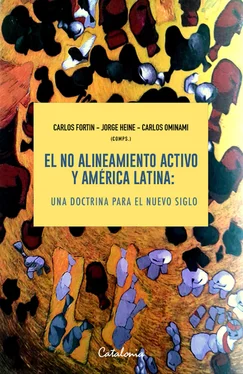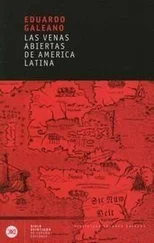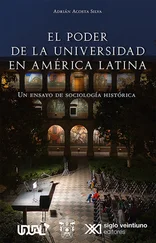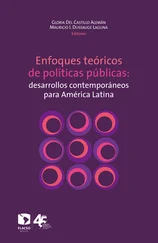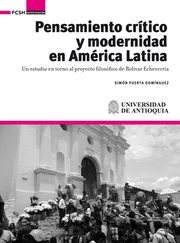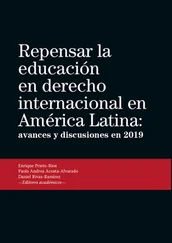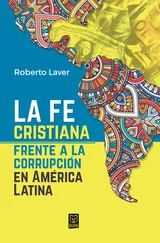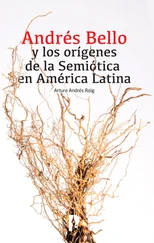Acharya, A. 2018. The End of American World Order. Cambridge: Cambridge University Press.
Acharya A. y B. Buzan. 2019. The Making of Global International Relations: Origins and Evolution of IR at its Centenary. Cambridge: Cambridge University Press.
Actis E. y N. Creus. 2020. La disputa por el poder global. China contra Estados Unidos en la crisis de la pandemia. Buenos Aires: Capital Intelectual.
Albertoni N. y J. Heine. 2020. América Latina se está quedando al margen del mundo que viene. New York Times, 30 de noviembre.
Anonymous. 2021. The Longer Telegram: Toward a New American China Strategy. Washington D.C.: The Atlantic Council, en https://www.atlanticcouncil.org/wp-content/uploads/2021/01/The-Longer-Telegram-Toward-A-New-American-China-Strategy.pdf.
Bremmer, I. 2020. No, the US and China are not heading towards a new Cold War. TIME, 28 December, en https://time.com/5920725/us-china-competition/.
Briceño Ruiz J. 2019. Del saber a la teorización en el regionalismo latinoamericano. IBEROAMERICANA: Nordic Journal of Latin American Studies 48(1):120-129, en https://www.iberoamericana.se/articles/10.16993/iberoamericana.467/.
Calder K. 2019. Super Continent:The Logic of Eurasian Integration. Stanford: Stanford University Press.
CEPAL. 2021. Perspectivas del Comercio Internacional de América Latina y el Caribe 2020: la integración regional es clave para la recuperación tras la crisis. Santiago: CEPAL, enero, en https://www.cepal.org/es/publicaciones/46613-perspectivas-comercio-internacional-america-latina-caribe-2020-la-integracion.
Cooley A. y D. Nexon. 2020. Exit from Hegemony: The Unraveling of the American Global Order. Oxford: Oxford University Press.
Damodaran A. K. 1983. Jawaharlal Nehru and Non Alignment. India Quarterly 39(1): 41-49, January-March.
De la Torre, A. et al. 2015. Latin America and the Rising South: Changing World Changing Priorities. Washington D.C.: The World Bank en https://openknowledge.worldbank.org/handle/10986/21869.
Deciancio M. y D. Tussie. 2019. Globalizing Global Governance: Peripheral Thoughts from Latin America. Fudan Journal of the Humanities and Social Sciences, 15 April en https://doi.org/10.1007/s40647-019-00263-3.
Drache D., A.T. Kingsmith y D. Qi. 2019. One Road, Many Dreams: China’s Bold Plan to Remake the Global Economy. London: Bloomsbury China.
Fortin C., J. Heine y C. Ominami. 2020a. Latinoamérica: No Alineamiento y la segunda Guerra Fría. Foreign Affairs Latinoamérica 20(3): 107-115.
________. 2020b. El no alineamiento activo: un camino para América Latina. Nueva Sociedad , septiembre.
Friedman T. 2005. The World is Flat: A Brief History of the 21 st Century . New York: Viking.
Gallagher K. y J. Heine. 2021. Biden needs to reverse Trump’s economic policy in Ecuador. The Hill , 26 January.
Getachew A. 2019. Worldmaking after Empire: The Rise and Fall of Self-Determination. Princeton: Princeton University Press.
González G. et al. 2021. Coyuntura crítica, transición de poder y vaciamiento latinoamericano. Nueva Sociedad 291: 49-65, enero-febrero.
Hopkin J. 2020. Anti-System Politics: The Crisis of Market Liberalism in Rich Democracies. New York: Oxford University Press.
Ikenberry G.J. 2020. A World Safe for Democracy: Liberal Internationalism and the Crises of Global Order. New Haven: Yale University Press.
Riggirozzi P. y D. Tussie, comps. 2012. The Rise of Post-Hegemonic Regionalism: The Case of Latin America. Cham Switzerland: Springer.
Roberts C., L.E. Armijo y Katada, S. N. 2017. The BRICS and Collective Financial Statecraft . New York: Oxford University Press.
Rouquié A. 1989. América Latina: Introducción al Extremo Occidente . Buenos Aires: Siglo XXI.
________. 2020. La encrucijada latinoamericana y los actores globales. En A. Serbin y W. Grabendorff (comps.), El redescubrimiento de América Latina y los actores globales. Barcelona: Icaria y CRIES.
Sanders B. 2021. Washington’s Dangerous New Consensus on China: Don’t Start Another Cold War. Foreign Affairs 17 June.
Serbin, A. 2020. Eurasia y América Latina en un mundo multipolar. Barcelona: Icaria y CRIES.
Schenoni, L. y A. Malamud. 2021. Sobre la creciente irrelevancia de América Latina. Nueva Sociedad 291:66-79, enero-febrero.
Snyder, G. 1997. Alliance Politics. Ithaca: Cornell University Press.
Stallings, B. 2020. Dependence in the 21 st Century: The Political Economy of China-Latin American Relations. Cambridge: Cambridge University Press.
Stuenkel, Oliver. 2020. The BRICS and the Future of Global Order . 2nd. ed. New York: Lexington Books.
________. 2016. Post-Western World: How Emerging Powers are Remaking Global Order. Cambridge: Polity Press.
Walt, Stephen. 1995. Alliance Formation and the Balance of Power. En Brown, M.E., S.M. Lynn-Jones y S.E. Miller, comps., The Perils of Anarchy, 208-248. Cambridge: Cambridge University Press.
Wilkins, T. 2012. Alignment, not “alliance”—the shifting paradigm of international security cooperation: toward a conceptual taxonomy of alignment. Review of International Studies 38(1): 53-76.
Ye, M. 2020. The Belt Road and Beyond: State-Mobilized Globalization in China: 1998-2018 . Cambridge: Cambridge University Press.
PRIMERA PARTE
1. Un orden mundial en crisis
Jorge Heine
Al cierre del trágico año 2020, una larga negociación entre China y la Unión Europea (UE) llegaba a su fin. Después de siete años de arduas reuniones acerca de un tratado de protección de inversiones entre la segunda mayor economía del mundo y el mayor mercado, el proceso culminaba. El acuerdo revestía especial importancia para Alemania, presidente pro tempore de la Unión Europea, y cuya exministra de Defensa, Ursula von der Leyen, preside la Comisión Europea. La canciller de Alemania, Ángela Merkel, no se presentaría a la reelección en las elecciones generales en 2021, así que este tratado adquiría especial significado para ella. La industria alemana, particularmente su sector automotriz, depende fuertemente del mercado chino, país en el cual todas las marcas alemanas –Volkswagen, Porsche, BMW, Audi y Mercedes-Benz– están representadas y producen automóviles en gran escala. Mercedes-Benz vende más vehículos en China que en Alemania, tal como General Motors vende más en China que en Estados Unidos. Con treinta millones de automóviles fabricados al año, China es no solo el mayor mercado automotriz, sino también el mayor productor.
Para el presidente Xi Jinping el tratado era clave, e instruyó a los negociadores chinos que hicieran lo necesario para llegar a acuerdo, incluyendo concesiones en temas álgidos como transferencias de tecnología. Había solo un problema. A ese acuerdo se llegaba en medio de la transición del gobierno del presidente Trump al del recién electo Joe Biden, y en los Estados Unidos este acuerdo entre la UE y China no era bien visto (Ewing y Myers 2020). Dado el diferendo entre Washington y Beijing, y su escalamiento desde lo comercial a lo tecnológico y lo diplomático, el acuerdo transmitía la señal equivocada. El mismo se sumaría a la firma del Regional Comprehensive Economic Partnership (RCEP), el mayor acuerdo comercial del planeta, el 15 de noviembre de 2020, entre China y catorce otros países de Asia y Australasia, así como al anuncio del presidente Xi en la cumbre virtual de APEC en Kuala Lumpur ese mismo mes, del renovado interés de China por ingresar al Acuerdo Transpacífico Comprehensivo y Progresista (CPTPP en la sigla en inglés) (Albertoni y Heine 2020). China aparecía copando la banca en materia de acuerdos comerciales y de inversión, en contraste con unos Estados Unidos cada vez más proteccionistas y aislacionistas.
Читать дальше
